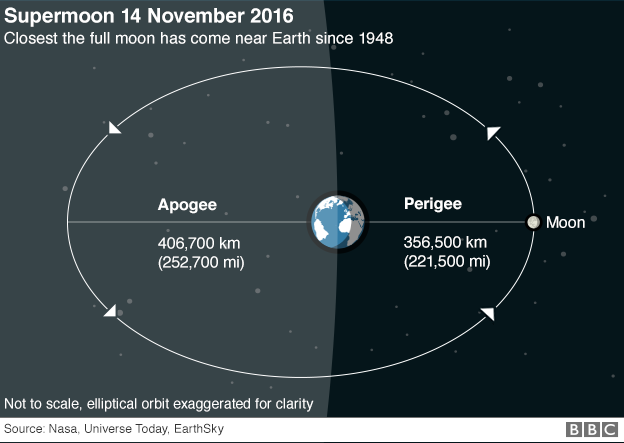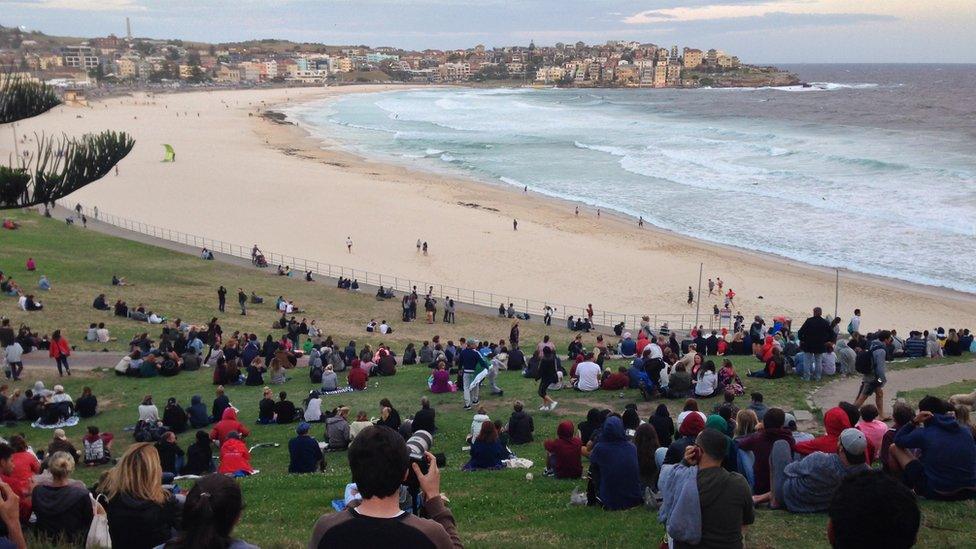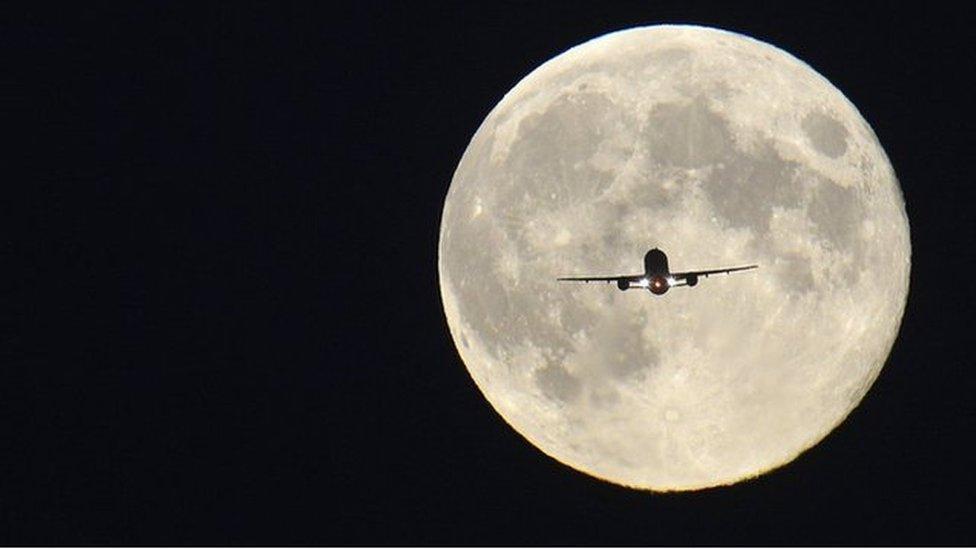'Supermoon' wows viewers with closest glimpse since 1948
- Published
'Supermoon' views from around the world
Skywatchers are enjoying the latest "supermoon", after Earth's satellite made its closest approach since 1948.
The UK's best chance to see it is on Monday evening; the Moon rose at 16:43 GMT in Edinburgh and 16:44 in London.
To observers, it will appear about 7% larger than normal and about 15% brighter - although the human eye is barely able to discern that difference.
The Moon was closest - only 221,524 miles (356,509km) away - at 11:21 GMT.
Top tips to photograph supermoon
It won't be this close again until 25 November 2034.
The Met Office's UK forecast suggests it will be cloudy when the supermoon is closest, although it advises people to check their local forecast for the event, external.

You might also like:

As the Moon traces its orbit around the Earth, we see different proportions illuminated by the Sun. Once in each orbit, our satellite is totally illuminated - a full moon.
And as the Moon orbits the Earth every 27 days or so, it travels in an elliptical or oval shape.
This means that its distance from our planet is not constant but varies across a full orbit.
What is a supermoon?
But within this uneven orbit there are further variations caused by the Earth's movements around the Sun.
These mean that the perigee - the closest approach - and full moon are not always in sync.
But occasions when the perigee and full moon coincide have become known in popular parlance as supermoons.

Taking good photos of the "supermoon"
Prof Tim O'Brien from the University of Manchester advises skywatchers to look to the east, where the Moon rises, for the best view. Go somewhere with a low horizon, away from obstructions like tall buildings.
He says there is an optical illusion when the Moon is low on the horizon that makes it look bigger.
For the perfect snap, Nasa photographer Bill Ingalls suggests using a reference point: "Don't make the mistake of photographing the Moon by itself with no reference to anything," he says.
He also advises scouting locations a day or two in advance and, if you are using a digital SLR, using a daylight white balance setting to capture moonlight.

To observers, the differences between a supermoon and a normal full moon are quite subtle.
Generally, supermoons can be up to 14% larger and 30% brighter, but only when compared with the furthest point the Moon gets to within its orbit.

"These differences are pretty small, and with the Moon rising so high in the sky, as it does in the winter months, it'll be quite hard to notice any difference without comparing photographs," Dr Chris North told The Conversation website., external
"But regardless of how big and bright it looks, the Moon really is a beautiful object to look at."
However Neil de Grasse Tyson, director of the Hayden Planetarium in New York, has previously suggested the events are just a little bit over-hyped.
"I don't know who first called it a supermoon," he told StarTalk radio, external.
"I don't know, but if you have a 16-inch pizza, would you call that a super pizza compared with a 15-inch pizza?"

Onlookers gathered at Bondi Beach in Australia in the hope of catching a first glimpse of the supermoon
Skywatchers in Australia were disappointed when thick clouds obscured their view of the Moon, which made a short-lived evening appearance.
At Bondi Beach in Sydney, the Moon rose at around 19:07 AEDT (08:07 GMT).
"It did not meet my expectations. It came out for about 30 seconds," said one onlooker, Michaela.
- Published11 November 2016

- Published14 November 2016